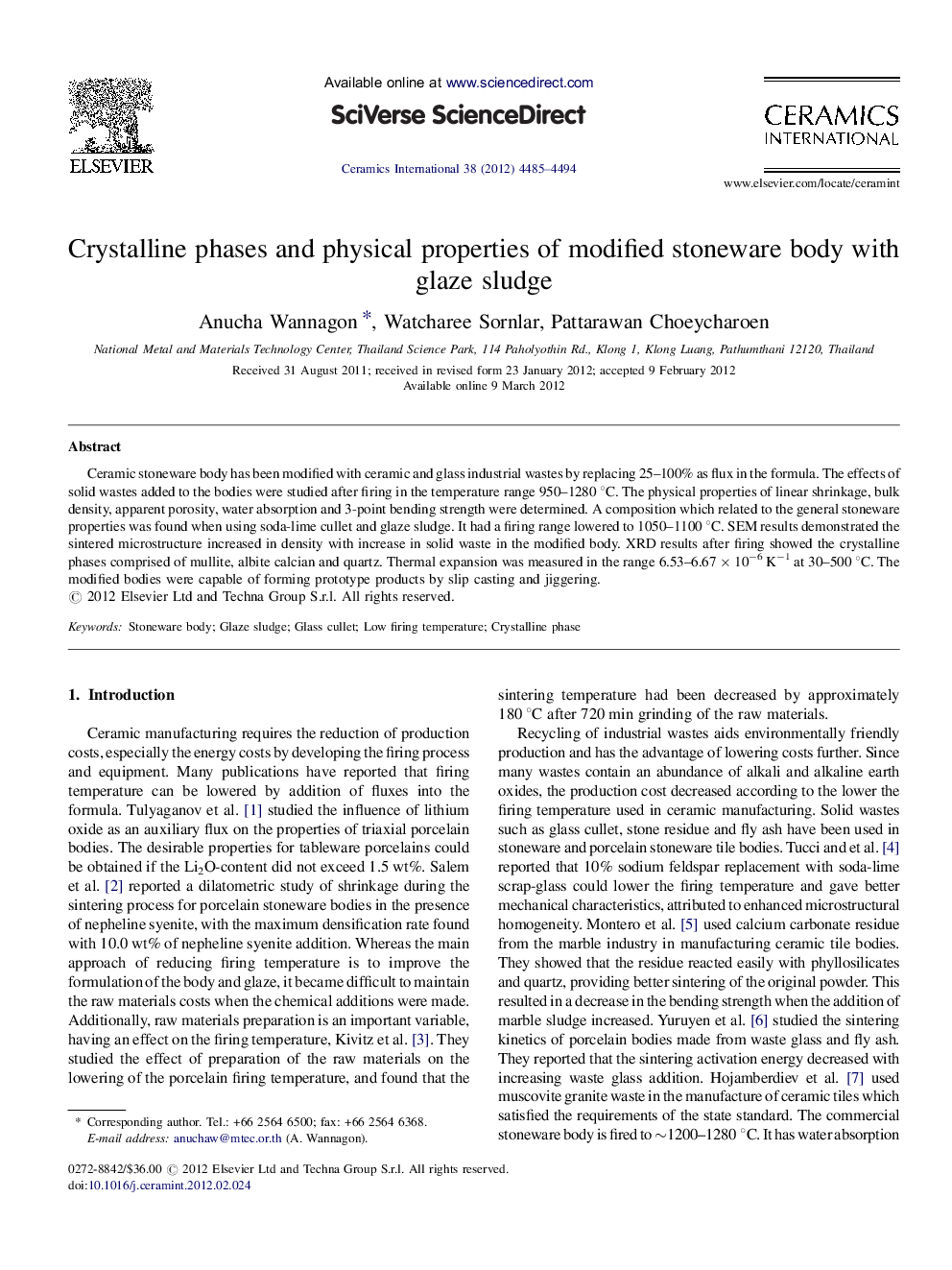| Article ID | Journal | Published Year | Pages | File Type |
|---|---|---|---|---|
| 1463708 | Ceramics International | 2012 | 10 Pages |
Ceramic stoneware body has been modified with ceramic and glass industrial wastes by replacing 25–100% as flux in the formula. The effects of solid wastes added to the bodies were studied after firing in the temperature range 950–1280 °C. The physical properties of linear shrinkage, bulk density, apparent porosity, water absorption and 3-point bending strength were determined. A composition which related to the general stoneware properties was found when using soda-lime cullet and glaze sludge. It had a firing range lowered to 1050–1100 °C. SEM results demonstrated the sintered microstructure increased in density with increase in solid waste in the modified body. XRD results after firing showed the crystalline phases comprised of mullite, albite calcian and quartz. Thermal expansion was measured in the range 6.53–6.67 × 10−6 K−1 at 30–500 °C. The modified bodies were capable of forming prototype products by slip casting and jiggering.
